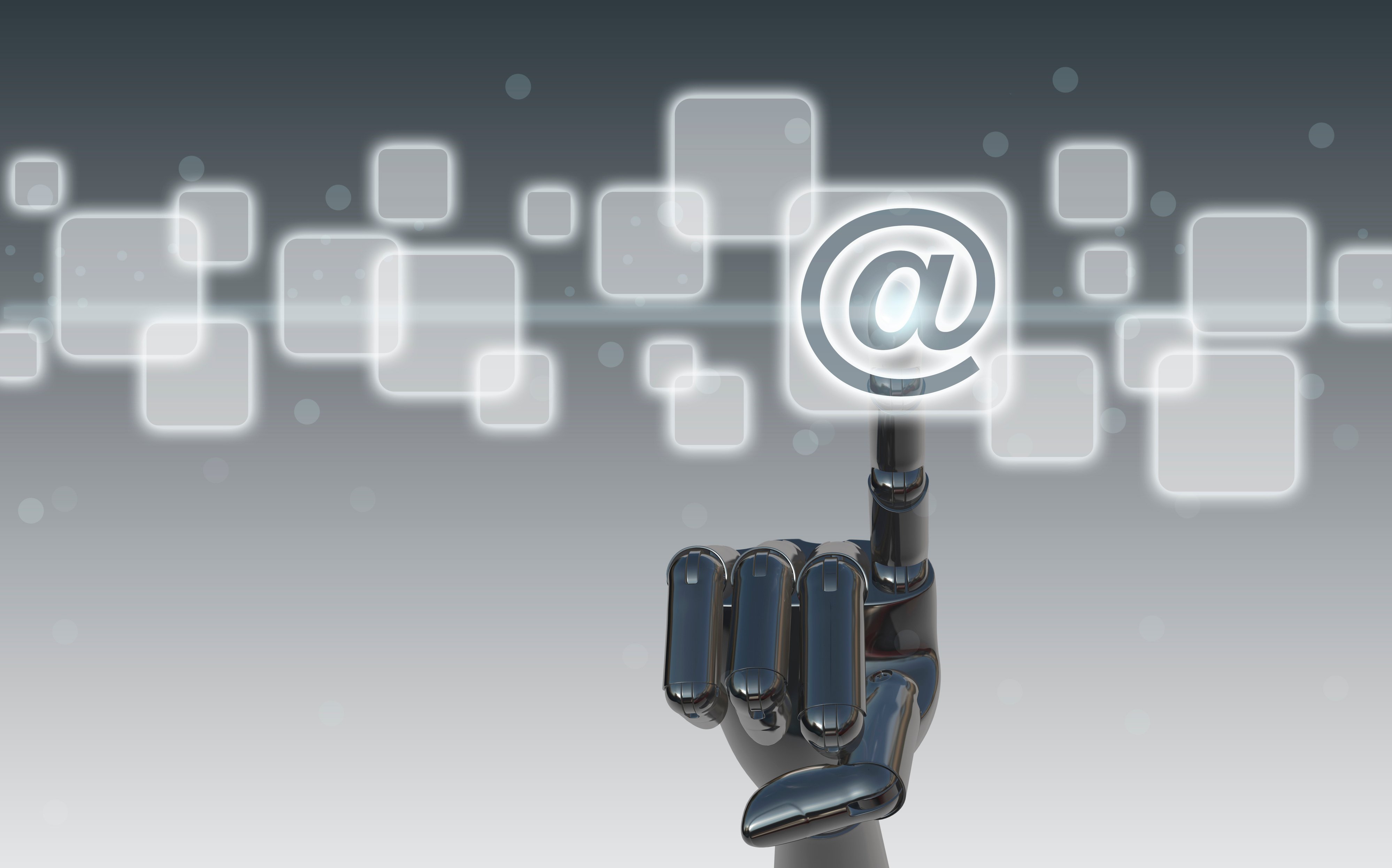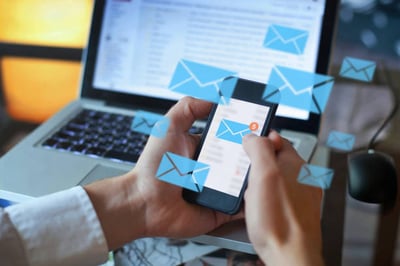April 14, 2020
 by Tejas Pitkar / April 14, 2020
by Tejas Pitkar / April 14, 2020

AI and machine learning have been buzzwords in every tech-based industry for at least the past decade.
At this point, artificial intelligence and machine learning have entered the email marketing industry as well – an industry that had been sorely lacking innovation and fresh ideas. If used effectively, AI can boost the email deliverability of your mailing domain.
Email deliverability is simply the ratio of emails landing in the inbox folder of the users as compared to spam. So if your deliverability is 95%, that means 95% of users received the emails in their inbox, and the rest of the 5% received it in spam. Because of this, email deliverability is a constant challenge for a marketer.
Until recently, email deliverability was mostly manual, where engineers with domain expertise used to have control on the segments created and how they should be delivered from the PMTA servers. But now, that’s all changing thanks to artificial intelligence. When used strategically, AI can be used to reach out to your customers in a more persuasive way, thus providing rich dividends on investment in AI technology.
Additionally, the processes governing a good email campaign have often always been manual as well, from coding HTML templates to selecting the audience to target, as well as the frequency of campaigns and times when emails are sent – all of these things were manually conducted by email marketing specialists. Now, the marketing automation boom has set in, and algorithms are triggered to reach out to a customer more efficiently and aggressively. Even so, these are also manually set by a marketer.
Thus, for AI to positively impact email marketing, it has to bring in a close-to-human intervention in terms of the main parameters listed above. To explain this further, a Forbes survey found that almost 40% of marketing departments prioritize AI and machine learning higher than any other department in enterprises.
Let’s dive deeper into how the adoption of AI and ML for your email campaigns can get you more ROI and overall engagement.
Superior email deliverability is the means for receiving a good ROI and performance for your email campaigns. If your email campaigns are focused on a specific targeted audience with personalized content persuasive enough to convert readers into customers, it will have a domino effect on your email deliverability as well.
Mailbox service providers (MSP) always allow emails which that users engage with in the inbox folder. Generic emails that are sent to a large number of people who are not necessarily your customers or subscribers will have a higher likelihood of being filtered into spam folders by MSPs. This is why AI-powered personalization is necessary and can ensure a higher rate of “inboxing” for emails rather than being relegated to the spam folder.
It will also reflect as a positive indicator of your sender domain health with MSPs. When a user engages with your email, it sends a positive engagement indicator to the MSP to allow your future emails to land in readers’ inbox folders as well. This improves your domain and IP reputation for mailbox providers, and provides returns with high opens and click-through rates for your campaigns.
The higher the engagement, the greater the brand affinity. This will increase ROI from your email campaigns; currently, email channels provide 42 times in return per unit invested.
The following ways are how you can use AI to give your email program the Midas touch, and thus keep enriching your UX and boosting conversions. As a preview, these strategies will need a share of data analytics, in-house creative designers, and an optimized CRM system to provide the data and insights.
With the exponential growth of digital channels to reach out to an audience, there is an avalanche of data for marketers to process. Analyzing this amount of data and predicting the right channel and strategy to target users is not feasible for your average person. Instead, using AI to analyze copious amounts of data and give insights on it in a short period of time is most ideal.
Most marketing platforms these use marketing automation tools to analyze user attributes and tailor content to individual users. With an email marketing platform equipped with AI, you can segment the email IDs based on customers’ past behavior or engagement with buying a similar product. Craftily-tailored content to your users will help you reach out to customers most likely to buy your product.
At the beginning, your sign-up preference should get users’ demographic attributes: gender, age, location, past transactions, and more. Based on this data, your CRM should be able to provide the marketing platform for all the possible details AI will need to make an intelligent decision. Data segmentation is thus a powerful tool to ace the email market.
AI components in your marketing platform can analyze data, and based on previous engagements or transacted history, can deliver the active IDs as a priority. Once these are delivered, the rest of the IDs (those who are only moderately engaged) can be targeted next, thanks to the help of AI.
The benefit of this strategy is to get the highest engagement possible on the first segment of your delivery. This will enable MSPs to accept the next wave of email IDs which may be moderately engaged or inactive and place them into their respective inboxes.
Based on past email interactions, AI can process data and provide insight into which campaigns and content provide the highest engagement and performance. This can include keywords that AI can search in the millions from your CRM’s data, and thus come up with highly-responsive keywords. These keywords can be included in your content or subject lines to provide future campaign ideas to target your audience.
Personalization should play a huge role in your email program. If your messaging is tailored to your audience choices or past interactions and transaction behavior, it will lead to a high engagement rate for your campaigns.
If more users open and engage with your emails because of the personalized messaging, it will naturally lead to a higher inbox placement rate. As mentioned earlier, MSPs prefer senders who provide relevant content to their users, not random emails shot in the dark hoping for engagement.
Rather than sending a campaign at a random time, users prefer receiving emails when they’re most likely to check their inbox. They’d rather open an email that was sent at 10am their time vs. 2am their time. Even if you are located in a different city or country, you should be aware that your user base is widely dispersed.
This trick works on a psychological level where the user gets in the habit of viewing a brand’s promos at a certain time. This may get them in the habit of opening and engaging with your emails if they anticipate you sending them around the same time every week.
During the sign-up process, you should collect your subscribers’ preferences for mailing frequency. If your sending frequency is between three to four times weekly, users might be overwhelmed with the amount of content you’re pushing. This is another process that can be automated with the help of AI.
If your AI platform can deliver optimized send time and frequency delivery, then your engagement will likely double. This will involve redesigning your email program to cater to user preferences. It could mean reducing the frequency of your messaging, but that may mean gaining the trust of your readers.
Subject lines are one of the primary deciding factors on whether a person opens your email or sends it to the trash bin. The more creative, relevant, and and shorter your subject lines are, the better the response will be. AI can contribute to subject line testing based on keywords that have performed well in the past.
When conducted manually, keyword searches can take a lot of time, but AI can help scour previous content and develop keywords that you can use A/B testing measures on to see which headlines perform best. Then, you’ll know which headlines to send which users, hopefully engaging people using various headlines.
Email marketers should know the benefits of AI and ML-powered solutions for email deliverability by now, and should no longer treat them like buzzwords. Instead, people need to know that using these solutions is a must in order to be successful in email marketing efforts in terms of ROI and brand affinity.
The rapidly-evolving email industry requires AI-powered integrations, but email marketers need to keep tabs on the impact of AI on their email programs. For instance, if you’re using an AI-powered platform for your email campaigns and not receiving the high ROI or engagement as expected, you should be diving deeper into your campaign and making more efforts to be personalized.
Although AI is based in computer science, it is logical to believe that modern day email marketing is a combination of science and art. It requires a human touch to make email campaign content more personal and individualized to an audience, and will need a lot of human intervention to design email copy that is user-friendly.
Additionally, data segmentation can be done with AI, but an email marketer should still have a fallback option of creating their own segments based on customer behavioral attributes. Some amount of manual intervention will always be required as email marketing depends a lot on customer behavior in general.
In essence, to realize the benefits of AI on your email deliverability, you’ll also need to monitor aspects of your data and engagement to make it successful.
AI and ML have become essential to the needs of a modern email marketer. These technologies help provide a personalized view of users, and make connecting with them more relevant and easier to do. AI helps create personalized journeys according to buyer personas, thus boosting email engagement, open rates, and ROI – all which will lead to superior deliverability.
Learn everything you've ever wanted to know – and more – by exploring G2's email marketing hub; see exactly how to perfect your strategies through AI and beyond!
Tejas Pitkar works for Netcore Solutions Inc. He is a content creator focused on email deliverability. In his free time, he likes to travel and drink chai.
The future of email marketing is here!
 by Aquibur Rahman
by Aquibur Rahman
Email is one of the most powerful tools for connecting with potential customers. It allows...
 by Aastha Shaw
by Aastha Shaw
Most people send emails under the general assumption that they’ll be delivered.
 by Antonio Gabric
by Antonio Gabric
The future of email marketing is here!
 by Aquibur Rahman
by Aquibur Rahman
Email is one of the most powerful tools for connecting with potential customers. It allows...
 by Aastha Shaw
by Aastha Shaw


